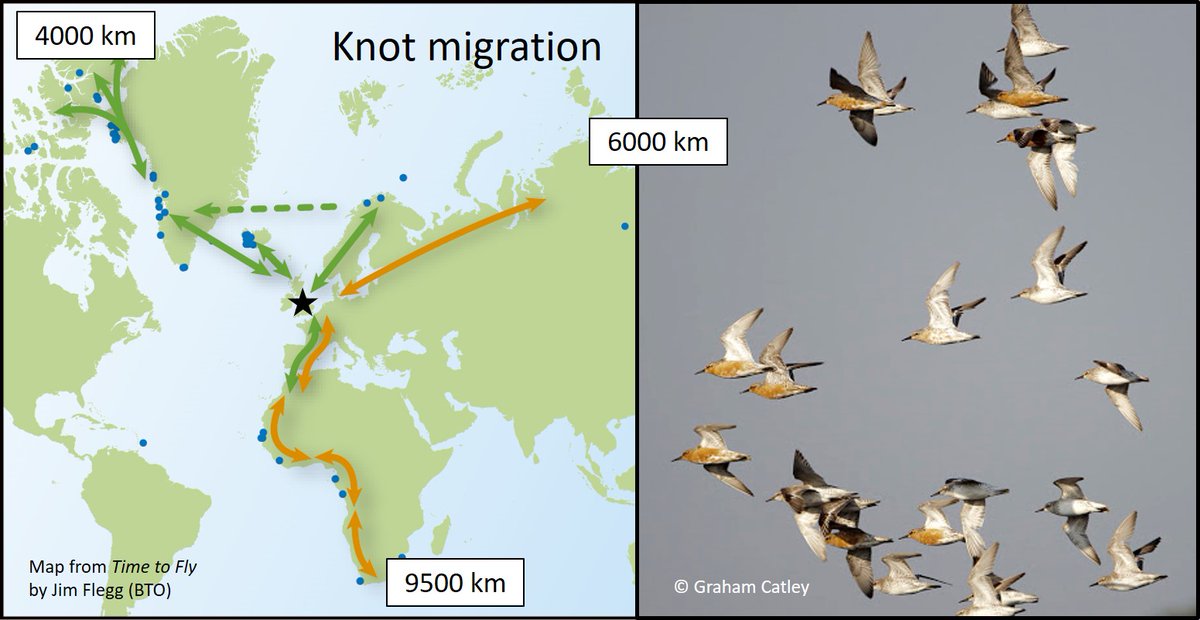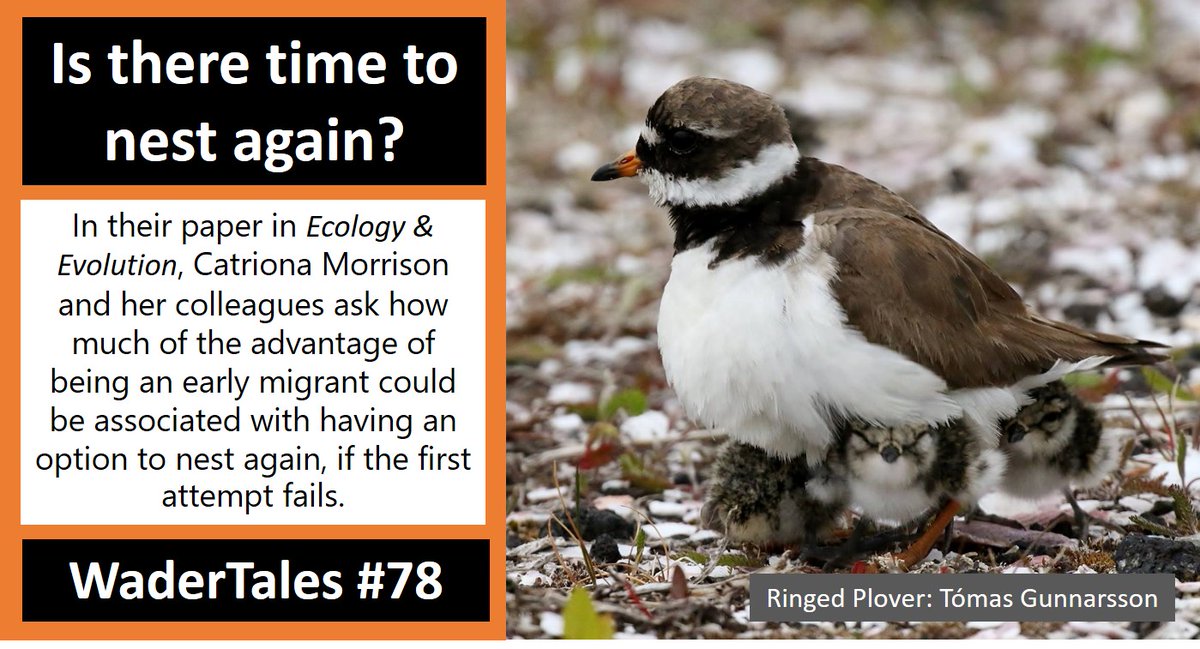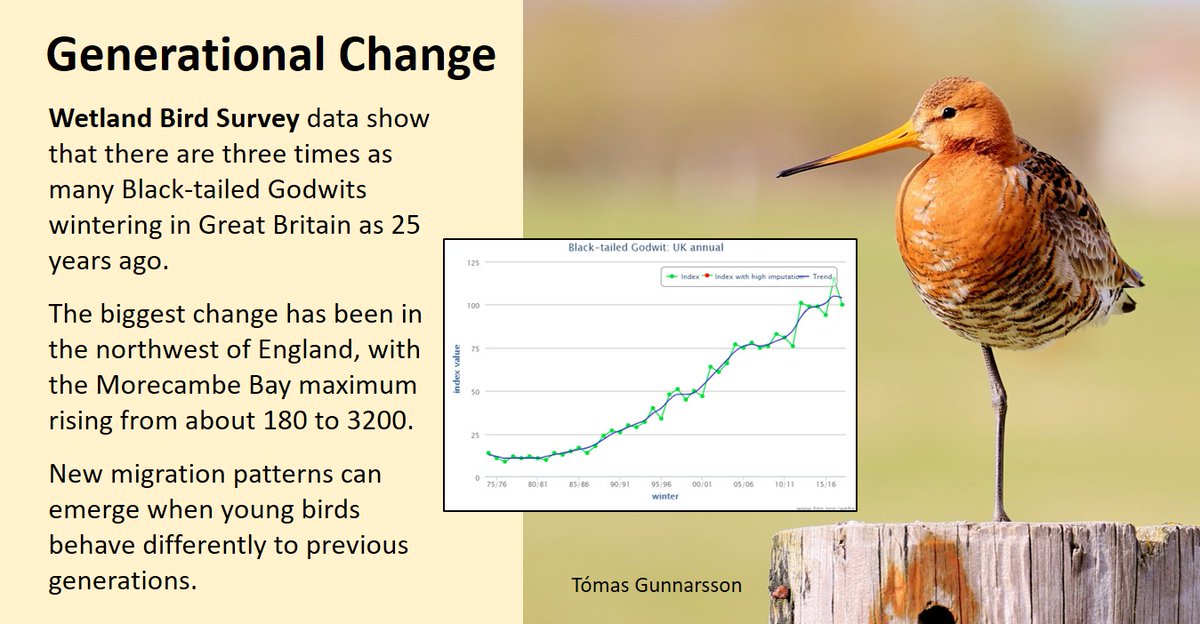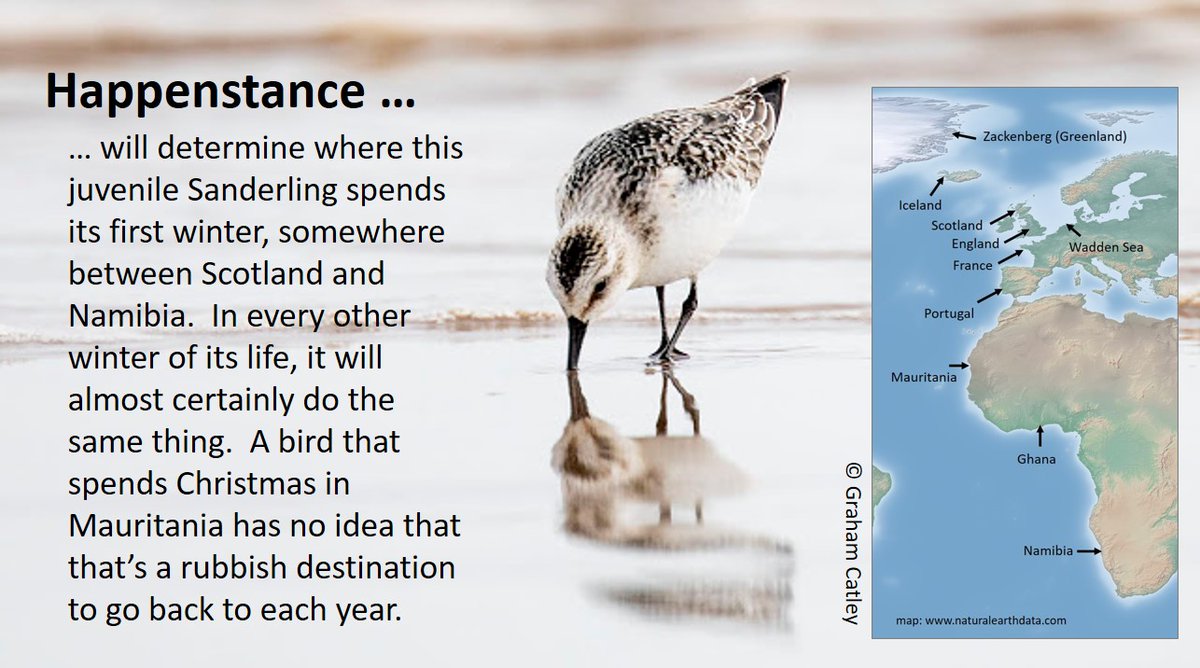TIME is an important part of the MIGRATION story for #waders #shorebirds.
A short thread 1/7
Firstly - who goes where? Summary of migration of #waders to/from/through UK/Ireland:
https://wadertales.wordpress.com/2017/07/20/which-wader-when-and-why/">https://wadertales.wordpress.com/2017/07/2...
#ornithology #waders #shorebirds #phenology
A short thread 1/7
Firstly - who goes where? Summary of migration of #waders to/from/through UK/Ireland:
https://wadertales.wordpress.com/2017/07/20/which-wader-when-and-why/">https://wadertales.wordpress.com/2017/07/2...
#ornithology #waders #shorebirds #phenology
2/7 Consider one species - RINGED PLOVER
There are already nests in the UK (1 April) but many Canada/Greenland breeders won& #39;t fly north until next month and many of these Russian birds won& #39;t breed until start of June
https://wadertales.wordpress.com/2018/01/25/well-travelled-ringed-plovers/
https://wadertales.wordpress.com/2018/01/2... href="https://twtext.com//hashtag/ornithology"> #ornithology #waders
There are already nests in the UK (1 April) but many Canada/Greenland breeders won& #39;t fly north until next month and many of these Russian birds won& #39;t breed until start of June
https://wadertales.wordpress.com/2018/01/25/well-travelled-ringed-plovers/
3/7 Different populations of the same SPECIES can be on very different time schedules, as can individuals within a local population. Here& #39;s why it pays to be an early bird:
https://wadertales.wordpress.com/2019/07/20/time-to-nest-again/
https://wadertales.wordpress.com/2019/07/2... href="https://twtext.com//hashtag/ornithology"> #ornithology #waders #nestrecording
https://wadertales.wordpress.com/2019/07/20/time-to-nest-again/
4/7 Once the timing of an individual& #39;s northward migration is set it does not change, as shown by these WHIMBREL:
https://wadertales.wordpress.com/2019/07/02/whimbrel-time-to-leave/
https://wadertales.wordpress.com/2019/07/0... href="https://twtext.com//hashtag/ornithology"> #ornithology #waders #shorebirds
https://wadertales.wordpress.com/2019/07/02/whimbrel-time-to-leave/
5/7 But spring arrival dates are getting EARLIER - so how does that happen?
https://wadertales.wordpress.com/2015/11/16/why-is-spring-migration-getting-earlier/
https://wadertales.wordpress.com/2015/11/1... href="https://twtext.com//hashtag/ornithology"> #ornithology #waders #shorebirds
https://wadertales.wordpress.com/2015/11/16/why-is-spring-migration-getting-earlier/
6/7 There is more about how MIGRATION PATTERNS are driven by what happens to birds in their first year here:
https://wadertales.wordpress.com/2019/07/29/generational-change/
https://wadertales.wordpress.com/2019/07/2... href="https://twtext.com//hashtag/ornithology"> #ornithology #waders #shorebirds
https://wadertales.wordpress.com/2019/07/29/generational-change/
7/7 When a young wader flies south for the first time, it establishes a migration schedule that can influence its SURVIVAL PROBABILITY and its chick-rearing potential. TIMING can have life-long consequences:
https://wadertales.wordpress.com/2019/10/04/travel-advice-for-sanderling/">https://wadertales.wordpress.com/2019/10/0...
#ornithology #waders #shorebirds #phenology
https://wadertales.wordpress.com/2019/10/04/travel-advice-for-sanderling/">https://wadertales.wordpress.com/2019/10/0...
#ornithology #waders #shorebirds #phenology

 Read on Twitter
Read on Twitter
 #ornithology #waders" title="2/7 Consider one species - RINGED PLOVERThere are already nests in the UK (1 April) but many Canada/Greenland breeders won& #39;t fly north until next month and many of these Russian birds won& #39;t breed until start of June https://wadertales.wordpress.com/2018/01/2... href="https://twtext.com//hashtag/ornithology"> #ornithology #waders" class="img-responsive" style="max-width:100%;"/>
#ornithology #waders" title="2/7 Consider one species - RINGED PLOVERThere are already nests in the UK (1 April) but many Canada/Greenland breeders won& #39;t fly north until next month and many of these Russian birds won& #39;t breed until start of June https://wadertales.wordpress.com/2018/01/2... href="https://twtext.com//hashtag/ornithology"> #ornithology #waders" class="img-responsive" style="max-width:100%;"/>
 #ornithology #waders #nestrecording" title="3/7 Different populations of the same SPECIES can be on very different time schedules, as can individuals within a local population. Here& #39;s why it pays to be an early bird: https://wadertales.wordpress.com/2019/07/2... href="https://twtext.com//hashtag/ornithology"> #ornithology #waders #nestrecording" class="img-responsive" style="max-width:100%;"/>
#ornithology #waders #nestrecording" title="3/7 Different populations of the same SPECIES can be on very different time schedules, as can individuals within a local population. Here& #39;s why it pays to be an early bird: https://wadertales.wordpress.com/2019/07/2... href="https://twtext.com//hashtag/ornithology"> #ornithology #waders #nestrecording" class="img-responsive" style="max-width:100%;"/>
 #ornithology #waders #shorebirds" title="4/7 Once the timing of an individual& #39;s northward migration is set it does not change, as shown by these WHIMBREL: https://wadertales.wordpress.com/2019/07/0... href="https://twtext.com//hashtag/ornithology"> #ornithology #waders #shorebirds" class="img-responsive" style="max-width:100%;"/>
#ornithology #waders #shorebirds" title="4/7 Once the timing of an individual& #39;s northward migration is set it does not change, as shown by these WHIMBREL: https://wadertales.wordpress.com/2019/07/0... href="https://twtext.com//hashtag/ornithology"> #ornithology #waders #shorebirds" class="img-responsive" style="max-width:100%;"/>
 #ornithology #waders #shorebirds" title="5/7 But spring arrival dates are getting EARLIER - so how does that happen? https://wadertales.wordpress.com/2015/11/1... href="https://twtext.com//hashtag/ornithology"> #ornithology #waders #shorebirds" class="img-responsive" style="max-width:100%;"/>
#ornithology #waders #shorebirds" title="5/7 But spring arrival dates are getting EARLIER - so how does that happen? https://wadertales.wordpress.com/2015/11/1... href="https://twtext.com//hashtag/ornithology"> #ornithology #waders #shorebirds" class="img-responsive" style="max-width:100%;"/>
 #ornithology #waders #shorebirds" title="6/7 There is more about how MIGRATION PATTERNS are driven by what happens to birds in their first year here: https://wadertales.wordpress.com/2019/07/2... href="https://twtext.com//hashtag/ornithology"> #ornithology #waders #shorebirds" class="img-responsive" style="max-width:100%;"/>
#ornithology #waders #shorebirds" title="6/7 There is more about how MIGRATION PATTERNS are driven by what happens to birds in their first year here: https://wadertales.wordpress.com/2019/07/2... href="https://twtext.com//hashtag/ornithology"> #ornithology #waders #shorebirds" class="img-responsive" style="max-width:100%;"/>



